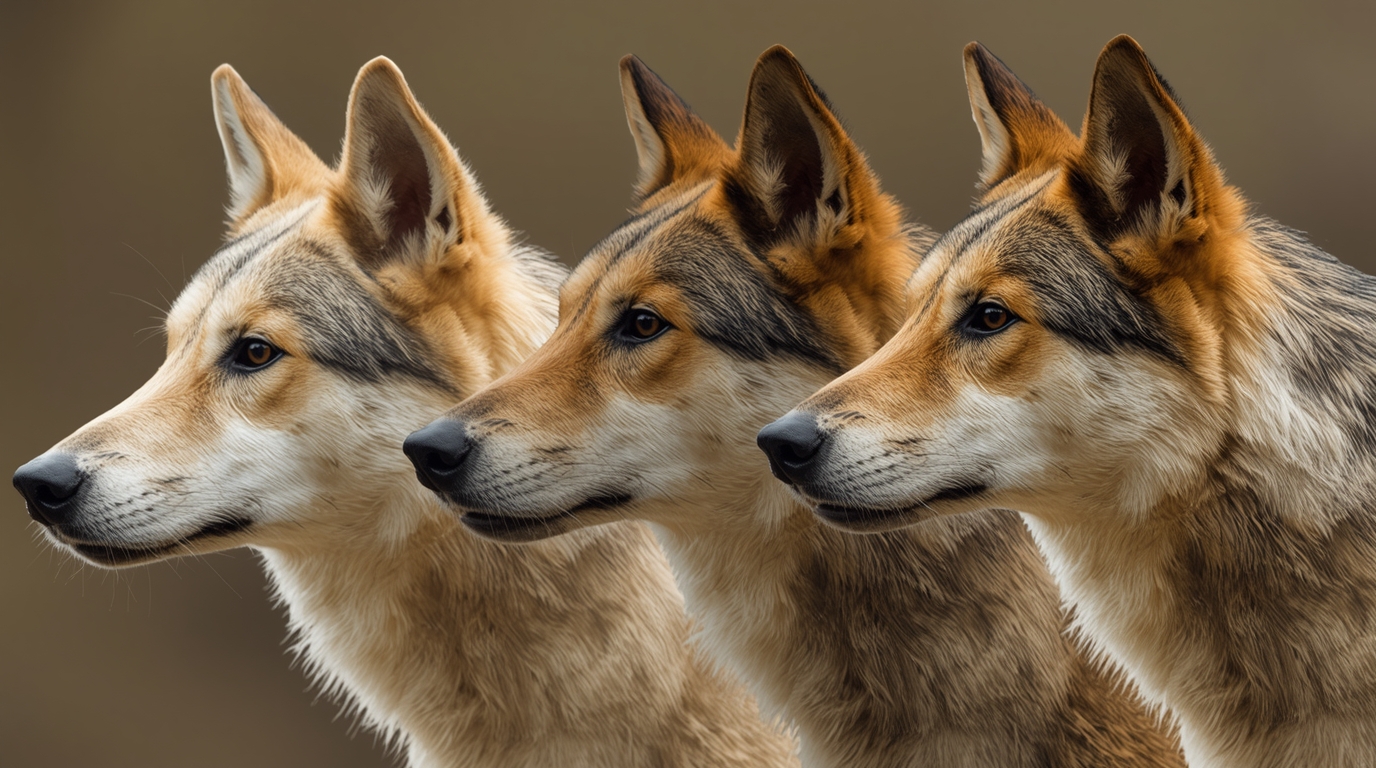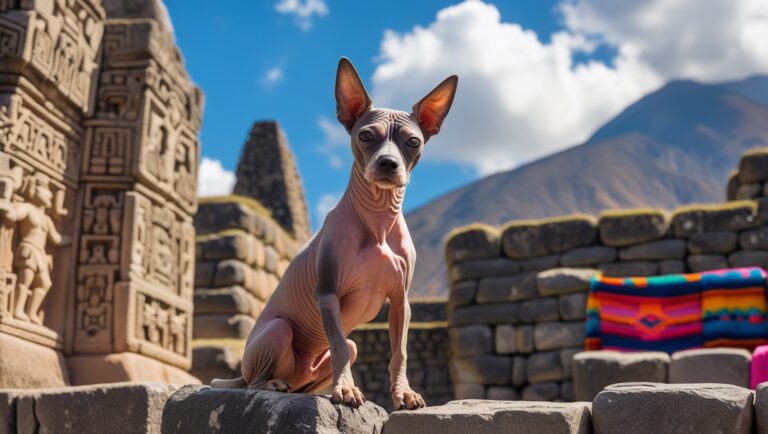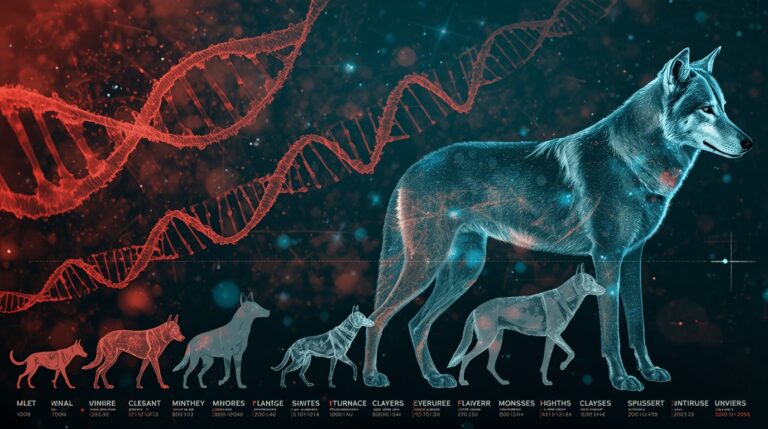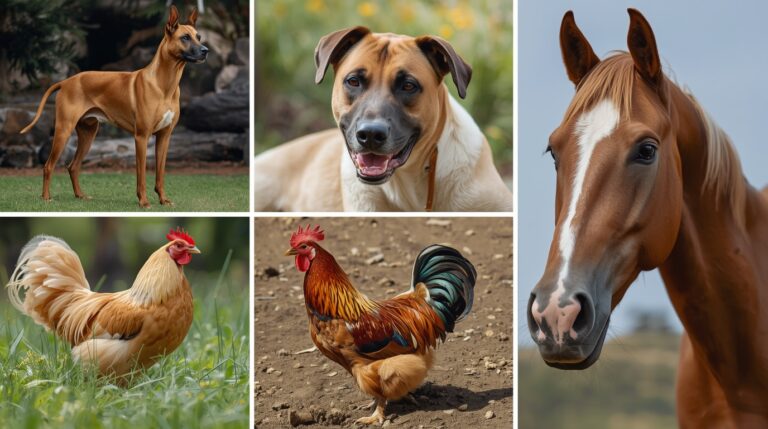How Selective Breeding Shaped Early Dogs

Introduction: From Wolves to Workers
The transformation of the gray wolf (Canis lupus) into the domesticated dog (Canis lupus familiaris) stands as one of the most remarkable evolutionary shifts in history. This process was not solely driven by natural adaptation—it was shaped heavily by selective breeding guided by early humans. By choosing dogs with desired traits—obedience, tameness, loyalty, hunting skill—our ancestors unknowingly sculpted the future of an entire species. This article explores how selective breeding shaped early dogs, changing their behavior, appearance, and role in human societies.
Understanding Selective Breeding
Selective breeding, also known as artificial selection, involves choosing specific animals with favorable traits to reproduce, thereby amplifying those traits in the next generation. Unlike natural selection, which is driven by environmental survival pressures, artificial selection is directed by humans for functional, behavioral, or later, aesthetic reasons. In early dog history, this form of intentional breeding focused on practical traits such as tracking ability, loyalty, and trainability.
The Beginning of Dog Domestication
The domestication of dogs likely began between 20,000 and 40,000 years ago, during the Upper Paleolithic era. Genetic studies using ancient DNA sequencing show that early dog lineages began diverging from wolves around this time. Unlike other domesticated animals, dogs joined humans before the advent of agriculture. Their early domestication was influenced by proximity, shared resources, and mutual survival benefits, eventually evolving into a process of selective breeding for desired behavioral and physical traits.
Functional vs. Natural Selection
In nature, wolves are shaped by natural selection—only the strongest, smartest, or most adaptable survive and reproduce. But once wolves began associating with humans, functional selection took precedence. Early humans unintentionally promoted dogs with traits like reduced aggression, docility, smaller stature, or strong hunting instincts, depending on the role needed. This shift in selection pressure led to dramatic changes in canine morphology and behavior within just a few generations.
Early Humans and Their Role in Selection
Our ancestors played a central role in artificial selection, even before understanding genetics. They likely chose to feed or shelter pups that were:
- Less fearful or aggressive
- More responsive to human cues
- Better at tracking or guarding
- Capable of forming social bonds
Those dogs survived and reproduced, while more independent or aggressive ones did not. Over time, these choices directed the evolution of early dogs, producing animals increasingly distinct from wolves.
Behavioral Traits Favored in Early Dogs
Among the first changes observed through selective breeding were behavioral traits. These included:
- Tameness
- Social tolerance of humans
- Trainability
- Reduced prey drive
- Increased attachment to human caregivers
These behaviors were essential for cooperation in hunting, camp guarding, and herding, and they became inherited traits. Some modern behaviors in dogs—such as following human gaze or responding to gestures—can be traced back to these early selective pressures.
Morphological Shifts in Selectively Bred Dogs
Selective breeding also brought about significant morphological changes:
- Shorter snouts
- Floppier ears
- Curled tails
- Smaller brain size
- More rounded skulls
These traits are typical in domesticated mammals, often categorized under the domestication syndrome. These changes weren’t necessarily selected directly; rather, they accompanied behavioral shifts, as seen in the famous Belyaev fox experiment.
The Rise of Neoteny and Juvenile Traits
Neoteny, the retention of juvenile features into adulthood, is a common result of selective breeding. Early dogs displayed:
- Puppy-like facial structures
- High-pitched vocalizations
- Playfulness
- Submissiveness
These traits appealed to humans and improved dog-human bonding, further reinforcing human-canine cohabitation. Selection for juvenile behavior led to physical traits that mirrored emotional ones—an evolutionary feedback loop that shaped the domestic dog.
Early Working Roles and Functional Breeding
Dogs were selectively bred based on their functional utility in early human societies:
- Hunting dogs were selected for endurance, smell sensitivity, and agility
- Guard dogs were bred for alertness, loyalty, and territorial behavior
- Herding dogs were chosen for obedience, stamina, and herd control instincts
- Sled dogs were selected for cold resistance and strength
This type of purpose-driven breeding created the first early working dog types, setting the stage for modern dog breeds.
Case Study: Zhokhov Island Sled Dogs
At Zhokhov Island in Arctic Russia, remains of 9,000-year-old dogs show signs of selective breeding for sledding. These dogs were larger, with strong shoulders and limb proportions ideal for traction. Genetic evidence and prehistoric tools suggest they were bred and managed systematically. This case illustrates early functional selection far before written records or formal breeds.
Archaeological Evidence of Breeding Preferences
Archaeozoological studies of dog skeletons reveal:
- Variation in limb length
- Differentiation in jaw structures
- Dental crowding, a result of shortened snouts
- Changes in cranial capacity compared to wolves
Sites like Bonn-Oberkassel and Ain Mallaha show dogs buried alongside humans, sometimes with grave goods, suggesting they had emotional and social value—another driver of selection.
Selective Breeding in the Natufian Period
The Natufian culture (~12,500 years ago) in the Levant represents one of the first farming communities to integrate dogs into daily life. Evidence shows they may have begun deliberate pairing of dogs based on functional traits. The famous puppy-and-woman co-burial at Ain Mallaha shows emotional investment that likely influenced selective choices.
Genetic Evidence: What Ancient DNA Tells Us
Ancient DNA (aDNA) extracted from prehistoric dog remains reveals:
- Multiple domestication events
- Regional trait selection patterns
- Shared mitochondrial haplotypes in early dogs
- Rapid divergence from wolf ancestors
This genetic data proves that selective breeding began early and had heritable consequences visible even in today’s dog genomes.
The Mitochondrial DNA Clues in Dog Evolution
Studies of mitochondrial DNA (mtDNA)—passed through maternal lines—have revealed several founder lineages in dogs. These lineages show geographic isolation and population bottlenecks, likely caused by early controlled breeding or climate-induced migration. mtDNA is crucial in tracking how selective pressure impacted dog evolution across continents.
Belyaev’s Foxes and the Domestication Model
The Belyaev fox experiment in Soviet Russia proved that selecting foxes for tameness alone caused:
- Behavioral docility
- Morphological changes like floppy ears and piebald coats
- Changes in reproductive cycles
This experiment supports the idea that behavioral selection in early dogs unintentionally produced physical traits, explaining the neoteny observed in domesticated canines.
Changes in Brain Structure and Cognitive Traits
MRI studies and fossil analysis indicate that early dogs developed:
- Smaller amygdalae, suggesting lower aggression
- Altered hypothalamic-pituitary-adrenal systems
- Increased capacity for social learning
These changes point to co-evolutionary cognitive development, where human interaction shaped the neurological evolution of dogs.
Early Dogs vs. Wolves: Key Differences
By 10,000 years ago, early dogs had already diverged significantly from wolves:
| Trait | Early Dog | Wolf |
| Snout shape | Shortened | Long and tapered |
| Ear position | Drooped (in some) | Upright |
| Brain case | Smaller, more rounded | Larger, angular |
| Temperament | Tame, social | Cautious, aggressive |
| Social behavior | Human-oriented | Pack-oriented |
These traits were shaped by selection, not random mutation, confirming the human-directed nature of early canine evolution.
Co-evolution of Dogs and Humans
Humans and dogs didn’t evolve separately—they co-evolved. As dogs adapted to human social environments, humans adjusted their behaviors too. This coevolution included:
- Communication adaptations
- Emotional synchronization
- Shared survival strategies
The development of selective empathy, a human trait, may have been enhanced by our bond with dogs.
The Genetic Bottleneck in Domesticated Dogs
Early selective breeding, especially in isolated communities, often caused genetic bottlenecks, reducing diversity and fixing traits. This explains:
- Limited ancestral lines in today’s dogs
- High prevalence of heritable diseases in some breeds
- Regional trait fixation (e.g., coat color, size)
Despite benefits, early selective breeding also narrowed the genetic pool—a challenge modern genetics seeks to reverse.
Population Divergence and Breed Isolation
As humans migrated, they brought dogs with them. Breeding in geographic isolation produced distinct lineages, like:
- Spitz-type dogs in the Arctic
- Sighthounds in the Middle East
- Molossers in Europe
This divergence laid the groundwork for later formal breed development, even though early dogs weren’t classified like today’s breeds.
Functional Selection Across Climates and Regions
Selective breeding adapted dogs to environmental pressures:
- Thick coats in tundra regions
- Slender builds in hot deserts
- Short snouts in dogs bred for indoor living
These adaptations were reinforced through generational breeding, showing how selective pressure mirrors environmental challenges.
Transition to Aesthetic Breeding (Later Period)
In later prehistoric and early historic times, some cultures began breeding dogs for appearance:
- Symmetry
- Coat texture
- Unique markings
Though rare in early times, this shift marked the beginning of aesthetic over functional breeding, leading to pure breeds and eventually kennel clubs.
How Selective Breeding Set the Stage for Modern Breeds
By selectively breeding for utility, temperament, and region-specific traits, early humans created the prototypes for:
- Herding breeds like the ancient ancestor of the Border Collie
- Guardian breeds such as the Molosser lineage
- Sled dogs like the precursor to the Siberian Husky
These ancient categories evolved into the 450+ recognized breeds today, all thanks to early selective breeding practices.
Challenges in Interpreting Fossil Data
While genetic and morphological evidence is rich, there are limits:
- Fossil remains often incomplete
- Hard to distinguish wolf-dog hybrids
- Environmental factors also shape traits
- Cultural behaviors rarely fossilize
Hence, multidisciplinary approaches combining archaeology, genetics, and behavioral science are essential for accuracy.
Conclusion: The Human Hand in Dog Evolution
From the first moment a wolf lingered near a campfire, the journey of dogs was forever tied to humans. Through selective breeding, our ancestors didn’t just tame a species—they engineered behavior, molded morphology, and co-authored evolution. The result is not just a companion animal but a testament to how deeply human values and needs can shape biology. Early humans may not have known the term “genetics,” but they wielded its power with remarkable effect.





